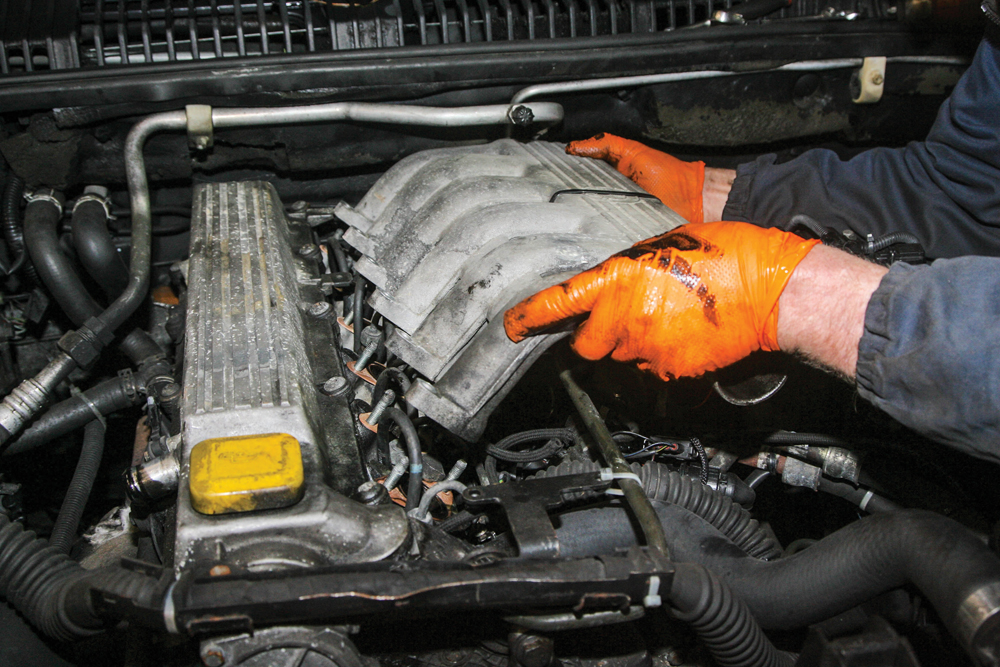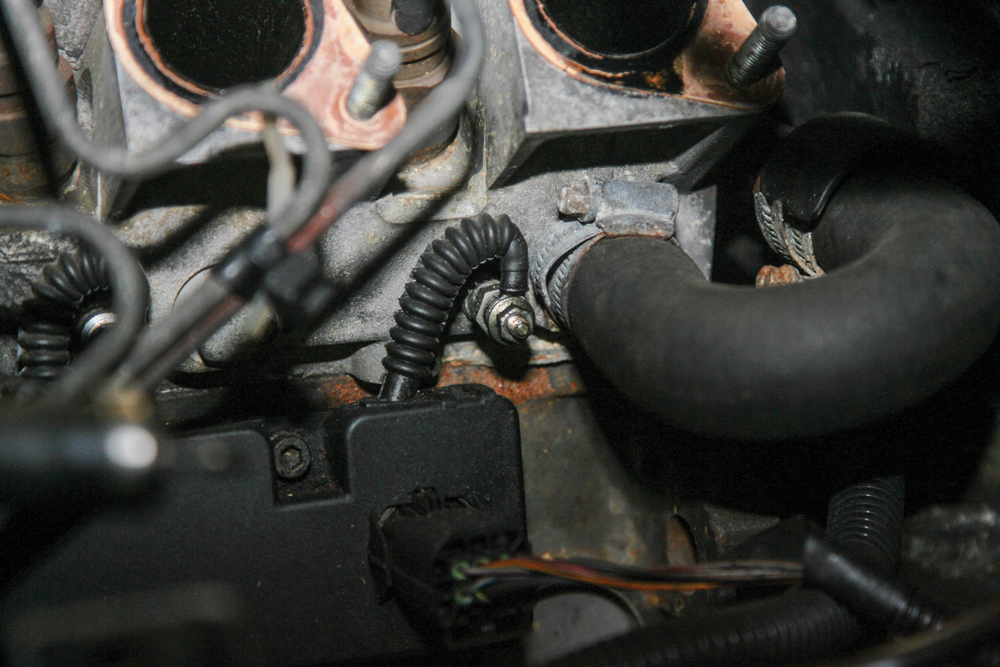06 August 2022
|
Poor cold starting on a diesel is often due to glow plug failure, but removal and replacement of the plugs needs care, as Dave Barker explains
NEED TO KNOW
Time: 1 hour.
Difficulty: 1 out of 5 stars
Models: P38 Range Rover here, but the job is similar on all diesel Land Rovers.
Tools needed: General workshop tools including 7 mm and 12 mm deep reach sockets, long extension and a wobble extension, long-nose pliers and a telescopic magnetic pick-up tool.
Parts used: STC3103, pack of six, heater glow plugs, around £26 depending on make.
Work safely: Wear protective gloves or barrier cream to protect the skin from oils and sharp edges of components.
Contact: Maddison 4x4, Water House Farm, Station Road, Topcliffe near Thirsk, YO7 3SG. Tel: 01845 587407, maddison4x4.com.
All diesel engines need the fuel to be pre-heated to assist a cold engine to start. This is done with a glow plug or heater plug for each cylinder, located in either the combustion chamber or the pre-chamber. The heater glow plug is in effect a simple electrical heater element that provides the initial heat to help the fuel combust when starting the engine from cold. Without this, especially in cold weather, the engine is difficult, or impossible, to start.
The glow plugs are operated automatically by a control unit that switches them on for a particular time period according to the sensed engine temperature. Earlier diesel engines, such as in the Series vehicles, required the ignition switch to be manually held in the heater plug position before releasing and starting the engine – the need to use the glow plugs and the period of heating being down to the driver’s judgement.
A glow plug’s heating element can, in time, either burn away or the plug can suffer an electrical failure. A diesel Range Rover will normally start if just one plug has failed, but will become increasingly more difficult as more fail, especially in cold weather.

The 1999 P38A Range Rover shown here has BMW’s M51 2.5-litre, six-cylinder turbo diesel engine. It failed to start on a cold morning, and testing found that four of the glow plugs had completely failed. To avoid future failures, it made sense to replace all six plugs.
Replacement on the P38 should be a quick job. The intake manifold needs to be removed, but that’s a simple unbolting and lift off job. The manifold is secured to the cylinder head studs by 12 nuts, six at the top of the flanges, and six at the bottom. The six lower nuts are more difficult to access and can be easily dropped when undone, so it’s best to use a magnetic pick up tool to hold each nut while removing it. Likewise, the small 7 mm securing nuts holding the feed wires onto the glow plugs could be easily lost down the side of the engine.

Location: Range Rover 2.5 BMW six-cylinder turbo diesel engine. The glow plugs are located on the right side under the intake manifold when looking from front of engine.

Removing duct: The air duct from the air filter housing to the turbocharger, and the air hose to the manifold are removed. If still fitted, remove the plastic injector cover.

Unbolted: Two bolts and nuts securing the intake manifold stays to the oil filter housing are released, and the pressure-sensing pipe under the intake manifold disconnected

Tackling the manifold: The intake manifold is released, starting with the six upper nuts (arrow). The lower nuts being released here are more difficult to access, between the pipes.

Don’t drop them: When undoing the six lower nuts, care is taken not to lose the nuts down the side of the engine. Here, a magnetic pick up tool holds them.

Lift away: The complete intake manifold assembly is now lifted off the studs and away from the cylinder head. The flange faces will be cleaned before refitting.

Locate the plugs: With the intake manifold removed, we see the six glow plugs. Three at the right here are visible and accessible, the other three are hidden between various pipework.

A closer look: The glow plugs are screwed into the cylinder head, and each has an electrical feed wire secured to the threaded terminal with a 7 mm nut.

Protect and release: The terminal nuts are released using a 7 mm deep socket and extension, and the nut collected with the magnetic pick-up tool. (Inlet ports covered to prevent dirt entering).

Plugs can easily snap: Long-nose pliers help lift the cables from the terminals, then the glow plugs are carefully unscrewed from the head using a long extension and a deep reach socket.

No visual defects: The plugs appeared in good order. The tips weren’t burnt and the threads were good. Body threads can seize in the head, causing them to shear during release.

Confirmation test: The electrical continuity test made earlier on the vehicle is now repeated on the bench, proving four of the plugs are defective. All six will be renewed.

Forward thinking: The terminal nuts were tight on the new glow plugs, and needed loosening before fitting. Anti-seize grease applied to the body threads will ensure easier removal next time.

Careful fitting: Using the deep reach socket again, the glow plugs are threaded into the cylinder head carefully to avoid cross-threading, and tightened to 20 Nm.

Cable nuts: With cables refitted, a grease blob in the end of the socket holds the nut in place, preventing it dropping while it’s screwed on. Tightened to just 4 Nm.

Manifold back on: When refitting the inlet manifold onto the cylinder head studs, we check no leak-off pipes are trapped under the flanges. Nuts are progressively tightened to 22 Nm.

Final connections: All that remains is to refit the intercooler hose, the intake manifold stays, the pressure-sensing pipe and the air duct. Job done, and easy cold engine starting.
Budget Digital Subscription
Get access to over 7 years of Land Rover Monthly – that’s almost 100 issues plus the latest digital issue. The issues are fully searchable so you can easily find what you are looking for and what’s more it’s less than 10p a day to subscribe. Click here and start enjoying all the benefits now.







